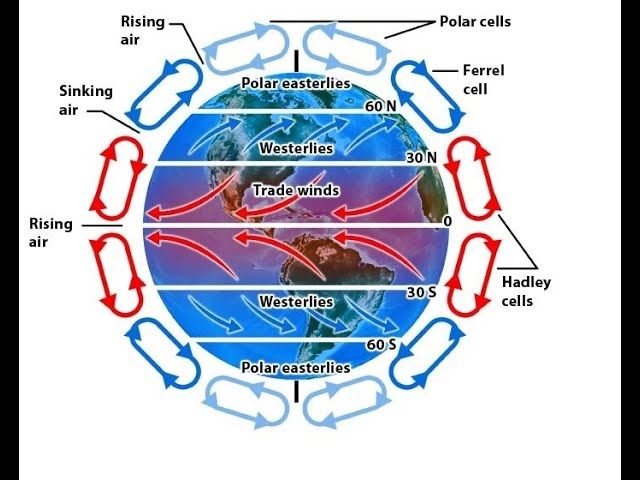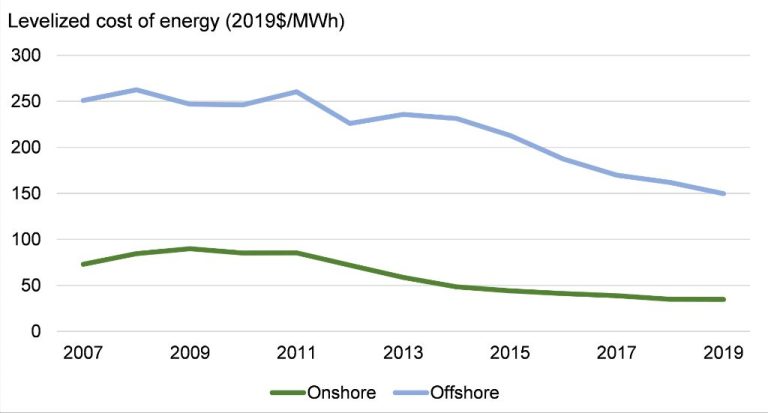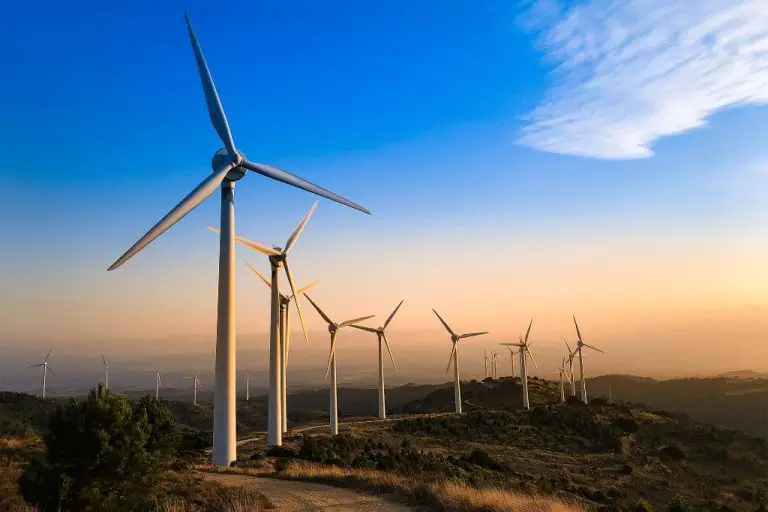What Are The Factors Of Origin Of Wind?
Wind is the movement of air from an area of higher pressure to lower pressure. The main factors that cause wind are differences in air pressure, the rotation of the Earth (Coriolis effect), temperature differences, moisture differences, terrain features like mountains, proximity to large bodies of water, vegetation, and urban areas.
Wind happens because the sun heats the Earth’s surface unevenly, creating differences in air pressure and temperature around the globe. Air flows from high to low pressure areas to balance out these differences. Features on the Earth’s surface like mountains, bodies of water, forests, and cities can also affect wind flow on a local level.
This article will explore the major scientific factors that drive wind patterns and behavior.
Pressure Gradients
Differences in air pressure are one of the most significant factors that cause wind to occur. Air flows from areas of high pressure to areas of low pressure. This movement of air from high to low pressure areas is called a pressure gradient force. The greater the difference in pressure between two locations, the stronger the pressure gradient force, and the stronger the resulting wind speeds.
On weather maps, lines called isobars are used to connect places with the same air pressure. The spacing between isobars indicates the pressure gradient force – tightly spaced isobars mean a steep pressure gradient and strong winds, while widely spaced isobars mean a gentle pressure gradient and light winds. Understanding and predicting pressure gradients allows meteorologists to forecast wind conditions.
Coriolis Effect
The Coriolis effect refers to the apparent deflection of objects that results when they are viewed in a rotating reference frame. On Earth, the rotation of the planet causes winds and ocean currents to curve due to the Coriolis effect.
As the Earth rotates on its axis, points near the equator move faster than those near the poles. This is because points along the equator have farther to travel in a 24 hour period as the Earth rotates. From the reference frame of the Earth’s surface, winds and currents appear to curve due to the difference in velocities at different latitudes.
In the Northern Hemisphere, the Coriolis effect deflects winds to the right. In the Southern Hemisphere, it deflects them to the left. This results in circulating wind patterns like trade winds in the tropics and westerlies that blow from west to east at mid-latitudes. The Coriolis effect shapes major ocean currents like the Gulf Stream in the Atlantic as well.
Overall, the Earth’s rotation has a significant influence over large-scale wind and ocean current patterns across the globe through the Coriolis effect. It plays a major role in determining global climate and weather.
Temperature Differences
Temperature variations between two areas create convection currents that can generate wind. When an area of air becomes warmer than the surrounding air, that warm air becomes less dense and rises. The surrounding cooler, denser air will then flow into the area that was occupied by the warm air. This movement and circulation of air masses is due to differences in air density created by temperature variations.

The greater the temperature difference between two areas, the stronger the convection currents will be. Large temperature gradients over a relatively small distance strengthen the pressure gradient force and cause faster winds. For example, temperature differences between a cold front over the ocean meeting a warm front over land can create strong onshore winds. The large temperature gradient fuels the convection currents and movement of air masses.
Moisture Differences
Variations in moisture content between different air masses is another major factor that drives wind formation. When an air mass contains a high concentration of water vapor, it has lower density compared to dry air. This density difference creates a pressure gradient, with high pressure building up in the drier air and low pressure forming in the moist air. Air flows from high to low pressure areas, so the dry air pushes into the lower pressure moist air. This movement of air from dry regions to moist regions is wind.
A prime example is sea breezes, where dense cool air over land flows toward the lower pressure, moisture-laden air over the ocean. The opposite occurs at night, when land cools faster than the ocean. Now the cool dense air is over the water, while the relatively warm moist air is over land. This creates an offshore land breeze.
On a larger scale, air flows from the dry subsiding air of the subtropical high pressure belts toward the low pressure equatorial tropical zones where intensive evaporation occurs. The equator-to-pole moisture gradient is a major driver of global wind patterns.
In summary, variations in moisture cause density and pressure differences in the atmosphere, forcing air movement from high pressure dry air toward low pressure moist air. Tracking moisture gradients provides key insight into wind formation and direction.
Mountain Ranges Can Channel Wind
Mountain ranges can have a significant effect on wind patterns. As large masses of air move across mountain ranges, the mountains create a barrier that forces the air to rise up and over the peaks. This can enhance winds on the windward side of a mountain range, while creating calm conditions in the lee of the mountains on the downwind side.
In some cases, gaps between mountains can channel winds through passes and canyons, resulting in very high wind speeds. Examples include the winds blowing through the Columbia River Gorge between Oregon and Washington, as well as the Santa Ana winds that blow from the deserts of southern California through passes and canyons near Los Angeles.
On a more local scale, winds are affected by slopes and valleys. During the day, the slopes of the valleys heat up rapidly and the warm air rises upslope, creating upvalley winds. At night, the slopes cool rapidly and the cooler denser air flows down the valleys, creating downvalley mountain breezes. These daily cycles of mountain and valley breezes are very pronounced in mountainous regions.
Bodies of Water
Large bodies of water like oceans and lakes have a significant impact on local wind patterns. During the day, the land heats up faster than the water. The warm air over the land rises, causing cooler air from over the water to rush in, creating a breeze blowing from the water onto the land. This is called a sea breeze or lake breeze.
At night, the opposite effect occurs. The land cools down faster than the water, so the cool air over the land sinks and the warmer air over the water rises. This causes a land breeze blowing from the land out to the sea.
The larger the body of water, the stronger this effect will be. The sea breezes along coasts and large lakes can penetrate quite far inland. In coastal regions, sea breezes modify the winds for many miles inland.
Another way large water bodies impact local wind is by slowing down winds blowing over them. The friction between the moving air and the water surface reduces wind speeds. Winds blowing over oceans and lakes are typically slower than winds over adjacent land areas.
Vegetation
Vegetation cover and type play an important role in wind patterns. Forests and other dense vegetation can slow wind speeds near the surface by causing more friction and turbulence. The leaves and branches deflect the wind, absorbing some of its energy. Trees also shelter the ground from wind by blocking and channeling air flow.
In particular, large forests tend to channel winds up and over the canopy. The tree trunks and branches force low-level winds to rise up to flow over the forest. This can create areas of accelerated wind flow above the forest, while slowing down winds closer to the surface. The roughness of the treetops causes turbulence that mixes faster moving air above with slower moving air below the canopy.
When forests are cleared or vegetation is sparse, surface winds can increase substantially. With less vegetation to absorb wind energy and cause friction, winds accelerate over areas like grasslands and agricultural fields. The differences in surface roughness between forests and open areas is an important factor in wind patterns across landscapes.
Urban Areas
The built up structure of cities greatly impacts the origin and flow of wind. The many tall buildings, concrete surfaces, and changed landscape create localized urban wind patterns. The complex structures of skyscrapers and highrise buildings create funnelling effects that accelerate wind at street level. At higher stories of these buildings, the wind speed can be slowed due to drag effects.
The urban heat island effect also influences wind patterns in cities. The abundance of heat-absorbing surfaces like concrete, asphalt, and black rooftops causes urban areas to become warmer than surrounding rural areas during the day and night. This temperature difference causes pressure differences between urban and rural areas that produce more wind flowing from rural areas into the city center. The urban heat island effect generally produces stronger winds in cities during the evenings.
Conclusion
In summary, the main factors that contribute to the origin of wind are pressure gradients, the Coriolis effect, temperature differences, moisture differences, mountains, bodies of water, vegetation, and urban areas. Wind is generated by the differences in atmospheric pressure caused by the uneven heating of the Earth’s surface from solar radiation. The rotation of the Earth also impacts global wind patterns through the Coriolis effect. Local winds can form due to temperature variations between land and sea, as well as differences in moisture content. Topographical features like mountains, bodies of water, forests, and cities can also influence wind formation through mechanical and thermal effects.
Understanding where winds originate is important because wind patterns drive weather events and impact climate around the world. Winds disperse heat, moisture, and air pollutants regionally and globally. Knowledge of wind formation helps meteorologists develop accurate weather predictions. Wind energy industries also rely on specialized wind maps and data to identify optimal locations for wind farms. Overall, the various factors that drive wind origins illustrate the complex interactions between Earth’s atmosphere, topography, and solar energy that shape our planet’s wind circulation.



